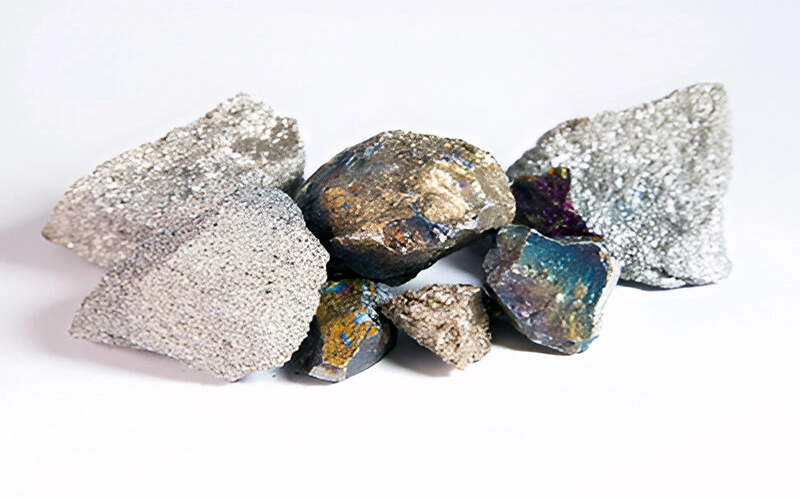Ferro vanadium (FeV) is an important alloy composed primarily of iron and vanadium, typically containing between 35% and 85% vanadium by weight. It plays a crucial role in the steel industry, where it is used as a key additive to improve the properties of various steel grades. By introducing vanadium into steel, manufacturers can significantly enhance strength, toughness, wear resistance, and corrosion resistance, all while maintaining a desirable level of ductility and weldability.
The production of ferro vanadium typically involves the reduction of vanadium pentoxide (V₂O₅) in the presence of iron, often using an electric arc furnace. The process may also include aluminum or silicon as reducing agents, depending on the desired quality and application of the final alloy. The result is a metallic compound with high vanadium content, which is then crushed and sized for use in steelmaking or other metallurgical applications.
One of the most common uses of ferro vanadium is in high-strength low-alloy (HSLA) steels. These steels are widely used in construction, automotive, and pipeline industries due to their enhanced mechanical properties and lower weight. The presence of vanadium in these steels promotes the formation of fine grain structures and vanadium carbides or nitrides, which increase the strength and durability of the material without significantly increasing its weight.
In addition to its use in structural steels, ferro vanadium is also employed in tool steels, high-speed steels, and some stainless steels. Its ability to improve hardness and high-temperature performance makes it invaluable for cutting tools, moulds, and dies.
The global demand for ferrovanadium is closely tied to trends in steel production and infrastructure development. As countries invest in modernizing buildings, bridges, railways, and vehicles, the need for high-performance steel continues to grow, indirectly boosting the demand for ferrovanadium.

Moreover, vanadium is gaining attention in the energy sector, particularly in vanadium redox flow batteries (VRFBs), which are used for large-scale energy storage. While these applications use pure vanadium rather than ferrovanadium, increased interest in vanadium as a strategic metal could influence the overall market dynamics.
In conclusion, ferrovanadium is a critical alloying material with broad industrial significance. Its ability to enhance the performance of steel while enabling more efficient and sustainable construction and manufacturing practices ensures its continued relevance in a wide range of applications.
The largest practical application of Ferro Vanadium is in the alloying process of any hardened steel. Ferro Vanadium also stabilises the beta form of titanium, which in turn increases the temperature stability of titanium. Mixed with aluminium in titanium alloys, Ferro Vanadium is also used in high-speed airframes and jet engines.

| V | S | P | Mn | Si | Al | C | Size |
|---|---|---|---|---|---|---|---|
| 81 | 0.05 | 0.035 | 0.2 | 1 | 1.5 | 0.25 | 30-50mm |
| V | S | P | N | C | Size |
|---|---|---|---|---|---|
| 76-81 | 0.1 | 0.06 | 10-14 | 10 | 10-50mm |